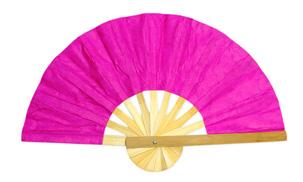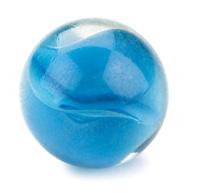



 Mia Jay Lexi Dara Monty
Mia Jay Lexi Dara Monty
Mia Jay Lexi Dara Monty
Mia Jay Lexi Dara Monty
First published 2024
The Educational Company of Ireland
Ballymount Road
Walkinstown
Dublin 12 www.edco.ie
A member of the Smurfit Kappa Group plc
© Annette Black, Claire Corroon, 2024
All rights reserved. No part of this publication may be reproduced, stored in a retrieval system, or transmitted in any form or by any means, electronic, mechanical, photocopying, recording or otherwise, without either the prior permission of the Publisher or a licence permitting restricted copying in Ireland issued by the Irish Copyright Licensing Agency, 63 Patrick Street, Dún Laoghaire, Co. Dublin.

Estimating and Measuring Time
Let’s investigate!
1. Estimate and then measure how long it takes to… (choose and ring one)
link 20 links throw a 6

2. Colour your answers.

write your name 5 times stick 20 cubes together


I will measure how long it takes in hours days seconds minutes
I will measure how long it takes using a calendar timer stopwatch clock
Estimated time:
Actual time:
Compared to the estimate, the actual time was… (3) faster slower
Try this! The children raced to stack 10 cubes.
Write who was 1st, 2nd, 3rd and 4th.
Mia 12 seconds
Lexi 8 seconds
Dara 7 seconds
Jay 10 seconds
Days, Months and Seasons
Finish Jay’s chart.
1. Write the seasons above the correct months.
2. Colour the names of the months of...
(a) autumn orange.
(b) winter blue.
(c) spring green.
(d) summer yellow.
3. Draw a picture for each month.
Fill in the blanks.
1. There are …
(a) days in a week (b) months in a year.
(c) seasons in a year. (d) months in each season.
2. My birthday is the of
3. It is in the season of
4. This year, my birthday is on a .
5. I could use a to find this out.
Let’s talk!
Is Jay correct? Explain why.
My birthday is on Friday the 8th of May every year.
Let’s talk
The Calendar
How is this similar to other calendars you have seen?
How is it different?
Why, do you think, are some of the numbers red?
Look at November on the calendar.
1. How many…
days? weekdays? weekend days? Fridays?
2. 3 the correct box.
There are more weekend days than weekdays.
There are less weekend days than weekdays.
3. The month after this month is .
The month before this month is .
4. The last day of the month is a .
5. This month has 5 . (Hint: a day)
6. 3 the correct box.
The season is: spring summer autumn winter
Let’s talk!
Answer the questions in again for October, December and a different month.
Are Dara and Lexi correct?
Half Past
Write the missing numbers. Draw the missing hands.
half past half past half past half past
half past 4 half past 12 8 o’clock half past 6
half past half past half past o’clock
Let’s talk!
Look at the clocks in
Say what the time would be…
(a) 1 hour later (b) 2 hours later (c) 1 hour earlier
Try this! Find 2 clocks in that show times that are…
1. 1 hour apart and colour them green
2. 2 hours apart and colour them red.
3. 3 hours apart and colour them blue
Estimating Time
This broken clock has only one hand. Estimate and write the time.
half
Draw the missing hand on each clock in . 3 the correct box.
The long minute hand was missing.
The short hour hand was missing.
3 the best answer for each.
It is...
nearly half past 2
exactly half past 2
just after half past 2
It is...
almost 9 o’clock
exactly 9 o’clock
just after 9 o’clock
It is...
almost half past 12
exactly half past 12
just after half past 12
2-D shapes
1. Use the colour code to colour the shapes. triangle square rectangle circle semi-circle oval
2. How many of each shape are there?
(a) triangle (b) square (c) rectangle
(d) circle (e) semi-circle (f) oval
3. Write an X in each corner of the shapes.
2-D Shapes: Sides and Corners
Complete the table.
Example: Draw another example.






How many straight sides?
How many curved sides?
How many corners?
Try this! Finish the patterns. Then, describe them to your partner without using the shapes names. What is the same? What is different?
Classifying 2-D Shapes
Match each shape to the correct label.
straight sides curved sides
Let’s talk!
Which shape should be matched to both labels? Explain why.
Draw one shape in each space below.
1. 3 corners or less more than 3 corners
2. sides the same length sides different lengths
Try this! What capital letter am I?
1. I have 1 straight and 1 curved side.
2. I have 1 curved side only.
Shapes in Shapes
Use a ruler to draw straight lines.
This reminds me of fractions. What fraction names could you use for these?
1. Draw 1 line to make 2 rectangles.
2. Draw 1 line to make 2 triangles.
3. Draw 2 lines to make 4 triangles.
4. Draw 2 lines to make 4 squares.
5. Draw 1 line to make 2 triangles.
6. Draw 1 line to make 2 triangles.
7. Draw 1 line to make 2 squares.
8. Draw 2 lines to make 4 rectangles.
9. Draw 2 lines to make 4 triangles.
Square corners
1. In , draw a dot in all of the square corners.
2. Write M beside the shape(s) with the most square corners.
3. Write L beside the shape(s) with the least square corners.
Try this!
Draw a shape without straight lines. Now, draw a straight line through it.
Can you name the shapes?
Naming and Sorting 3-D Shapes
Match each shape to its name. cube cuboid cylinder sphere cone
Maths eyes
What can these 3-D shapes do? 3 what each 3-D shape can do. Roll Stack Slide





3-D Shapes: Faces, Surfaces, Edges and Corners
Let’s talk!
What is the same in each set?
What is different in each set?
Complete the table.
How many…
3-D shape: Example: flat faces? edges? curved surfaces? corners?





Maths eyes
Look around you and find one of the 3-D shapes in Draw the 2-D parts of the shape.
Building with 3-D Shapes
Let’s investigate!
Use . Will the shapes stay stacked? 3 or 7
Colour the pieces needed to make the rocket green. Colour the pieces needed to make the robot blue.
Let’s play! Make a 3-D shape!
● You will need a
● Take turns to throw the dice. You get a 2-D shape for each number you throw.
● Record your 2-D shapes on your mini-whiteboard.
● The first player to get enough 2-D shapes to make a , or is the winner.
Counting
Ring each group of ten. Count how many items in each box.










































Join the beads in order, starting with the smallest number.
Try this! Mia is counting from 75 to 94
3 the numbers she will say. Explain why.
Let’s investigate!
How many?
Counting Groups



Choose a resource to count. In a container, put an amount that you think is between 30 and 90. Do not count!
Draw one of what you are counting.
Make an estimate that is too big.
Make an estimate that is too small.
Make a reasonable estimate. Now count.
Total amount =
Try this! How many more to make 100?
How many more?
Comparing and Ordering Numbers
Ring the greatest in each set if possible. Write <, > or =. 1. 2. 3. 4. Ring the greatest in each set if possible. Write <, > or =.
Try this!
1. Use two digits each time to make the numbers:
(a) the greatest number
(c) two other numbers
2. Order your numbers.
(b) the smallest number
Estimating Numbers
Write the ten before and after the number. Ring the nearest ten.
Draw an arrow from each number to its place on the number line. Ring the nearest ten.
Estimate the number at each arrow.
D Let’s talk!
What is the nearest ten to each of the numbers in ?
Number Hunts
Maths eyes
1. Walk around the school. Find six numbers between 0 and 100. Write them and show them as a sketch.
(a) (b) (c)

(d) (e) (f)
2. Show where each number sits on the number line.
3. Round each of the numbers to the nearest ten.
(a) ➜ (b) ➜ (c) ➜
(d) ➜ (e) ➜ (f) ➜
Look for a car!
1. Write the reg plate number:
2. Use two of the digits each time to make:
(a) the greatest number
(b) the smallest number
(c) two other numbers


3. Order the four numbers above. smallest greatest
Finding Patterns
Continue the patterns. 1. 2. 3.
Continue the patterns. Ring the core in each.
1.

2.


3.

4.























Try this! Colour each scarf in a different pattern. Use two colours.
Describing and Making Patterns
Complete the patterns. Each pattern’s core has three elements.
Use to draw three different pattern cores. 1. 2. 3.
Use your cores from to draw three patterns. 1. 2. 3.
Try this!
Use . Choose three colours. How many different patterns can you make?
Record them in your copy.
Growing and Shrinking Patterns
Draw the next two terms and write the numbers.
In , which were...
(a) growing patterns?
(b) shrinking patterns?
Draw the next two terms in the pattern.
How many did you add each time?
D Write the missing terms. Use your 100 square.
1. 1, 3, 5, 7, , ,
2. 6, 8, 10, , ,
3. 30, 25, 20, ,
Let’s talk!
For each pattern in D , explain its rule:
Was it growing or shrinking?
By how much each time?
Try this!
1. Make a growing or shrinking pattern, using materials or numbers.
2. Challenge your partner to work out the rule of your pattern.
How much a pattern changes each time is called its rule.
Pictograms
Dara collected these marbles:




















Think of a sorting rule for Dara’s marbles. Write labels and complete this tally chart. Mark off each item as you tally. _____________ _____________ _____________
Tally: Total:
Complete this pictogram. Title:
Dara’s marbles
Let’s talk!
Can you think of a different sorting rule for Dara’s marbles?









